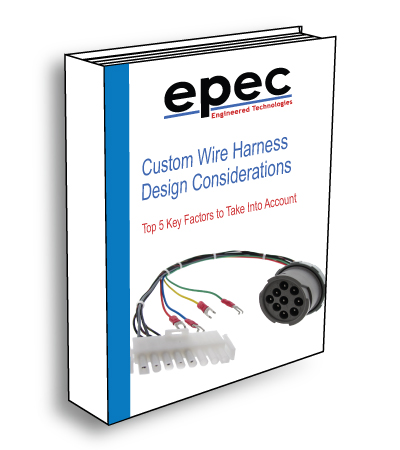Register to Quote and Order Your PCBs Online, 24/7
Inside the Custom Wire Harness Design Considerations Ebook, we cover the types electrical power and data signals being passed along the cable, choosing an appropriate wire type, cable lengths and tolerances, and more.
Designing a custom wire harness involves careful consideration of various key factors to ensure optimal performance, reliability, and compatibility over the life of the project. These factors apply during the prototyping phase, and especially again when a build moves to production as quantities could reach millions of pieces per year.
Insiders Look:

If a cable design is inadequate, the impact could be enormous incurring both schedule delays and reduced profitability, or even worse, liability questions and system damage. No matter the industry, cables play a vital role in system performance, and before designing any new cable, engineers need to simply understand the application and select components carefully based on their rated voltage, temperature, and jacket material needs.
At their core, all a wire or cable actually does is pass electrons from one device to another, and because of this fact, there are a lot of cable types that could work for your project. But the key is that not all cables will perform as intended for the life of the project, and selecting the right bulk wire, connector, and supplier early in the process will absolutely reduce program issues in the future.
By following all of the steps outlined in this Ebook, designers and engineers can streamline the cable design process and achieve successful outcomes.
Fill out our short form to receive your FREE copy!
Over the past 70 years, the electronics manufacturing industry has changed dramatically as the industry continues to adapt to evolving demands and technology. Epec is at the forefront of innovation, with the expertise and agility to move at the speed of today’s businesses. At Epec, the customer comes first, and everything we do must be put through that filter. Whether it is developing e-commerce platforms to make it easier to work with us or creating a new product introduction (NPI) process that helps our customers get to market faster, we must focus on building the new. By doing that every day, and by always making the customer our top priority, we plan on being here for another 70 years and then some.
Learn more about our 70 year story →
© 2025 Copyright Epec, LLC. All Rights Reserved.